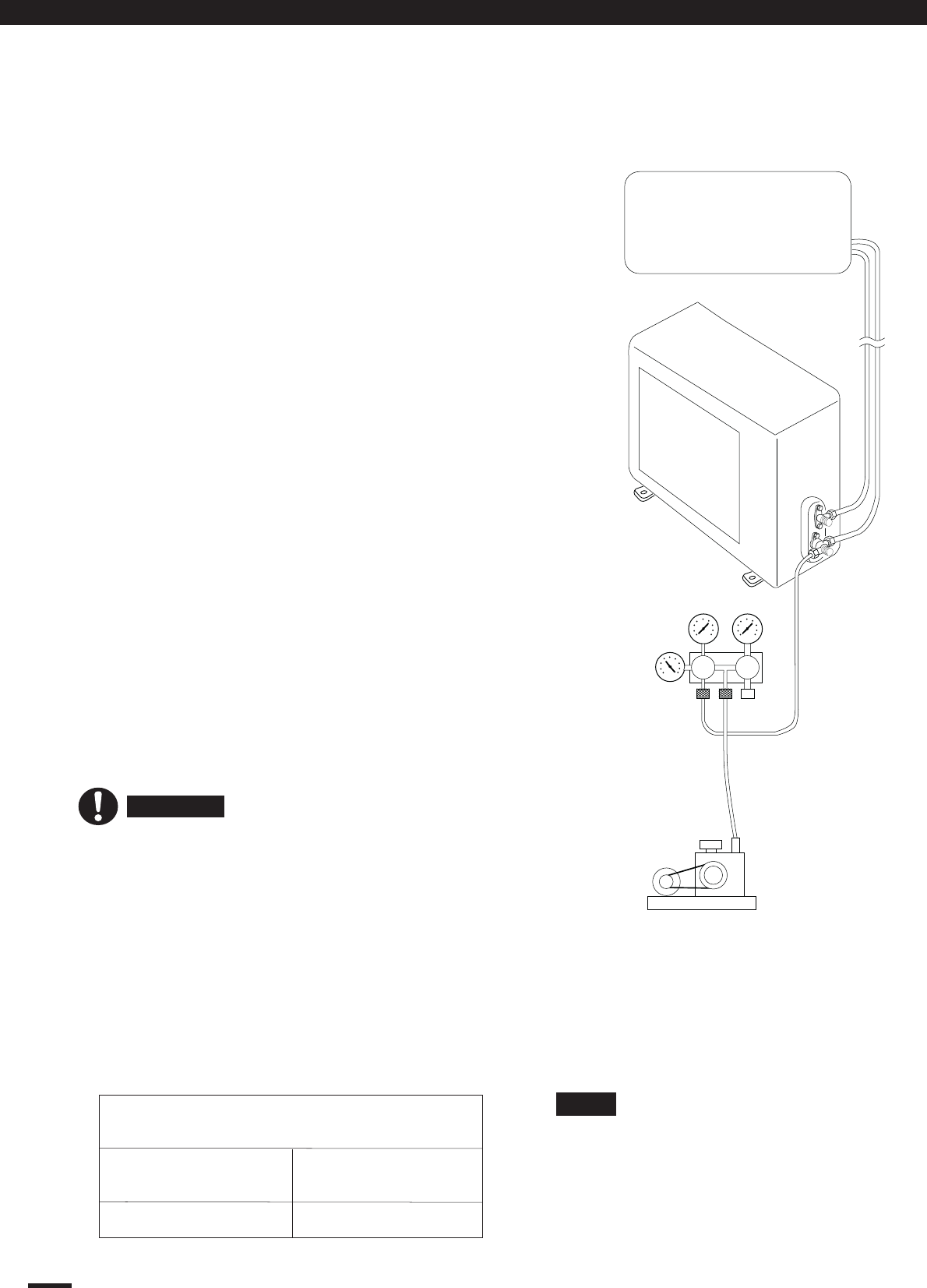
29
NOTE
Air and moisture remaining in the refrigerant
system have undersirable effects as indicated
below. Therefore, they must be purged
completely.
• Pressure in the system rises
• Operating current rises
• Cooling (or heating) efficiency drops
• Moisture in the air may freeze and block
capillary tubing.
• Water may lead to corrosion of parts in the
refrigerant system.
Hi
Lo
Indoor unit
Outdoor unit
Manifold valve
Pressure
gauge
Vacuum pump
Fig.35
AIR PURGING WITH A VACUUM PUMP
(FOR TEST RUN)
1. Check that each tube (both narrow and wide
tubes) between the indoor and outdoor units
have been properly connected and all wiring
for the test run has been completed. Noted
that both narrow and wide tube service valves
on the outdoor unit are kept closed at this
stage.
2. Using a adjustable wrench or box wrench,
remove the valve caps from the service on
both narrow and wide tubes.
3. Connect a vacuum pump and a manifold
valve (with pressure gauges) to the service
port on the wide tube service valve. (Fig.35)
Be sure to use a manifold valve for air
purging. If it is not available, use a stop valve
for this pupose. The "Hi" knob of the
manifold valve must always be kept closed.
4. With the "Lo" knob of the manifold valve open,
run the vacuum pump. The operation time for
the vacuum pump varies with tubing length
and the capacity of the pump. The following
table shows the amount of time for evacuation:
Table 3
Required time for evacuation when
capacity of 100 liter/h vacuum pump is used
If tubing length is
less than 7 m
10 min. or more
15 min.or more
If tubing length is
more than 7 m
The require time in the table
3 is calculated based on the
assumption that the ideal
(or target) vacuum condition
is around 10 mmHg abs.
10.3 Air Purging
CAUTION
10. INSTALL OUTDOOR UNIT
Installation Service


















